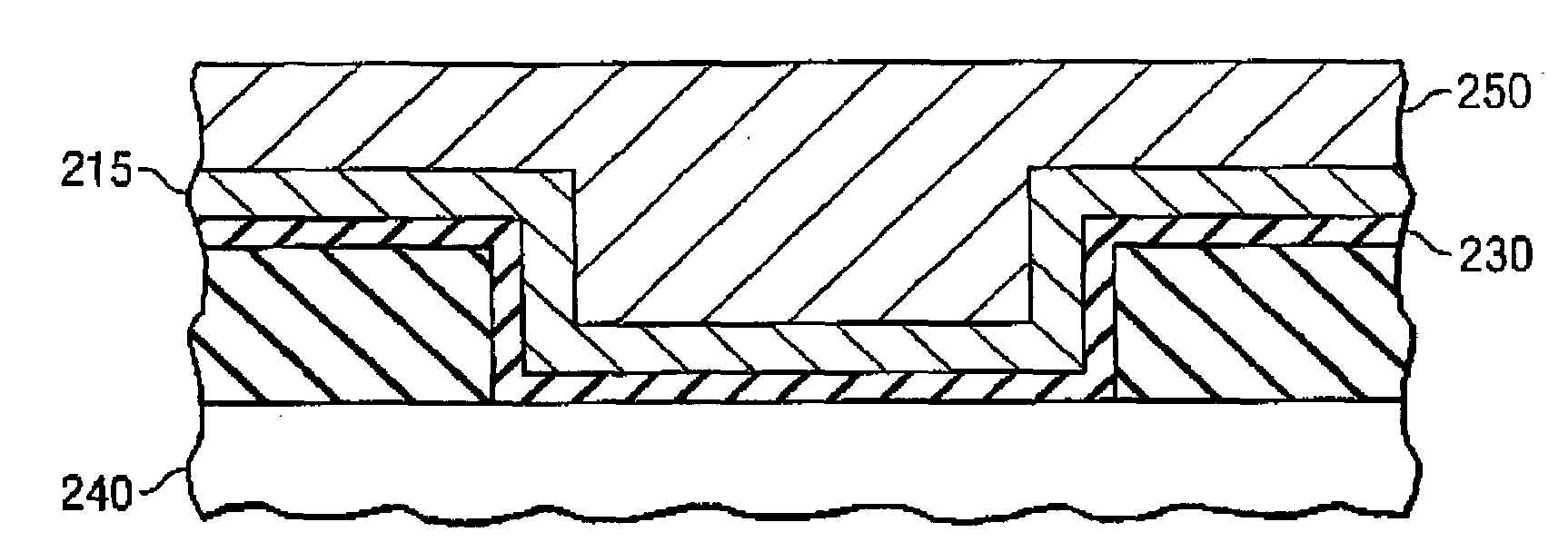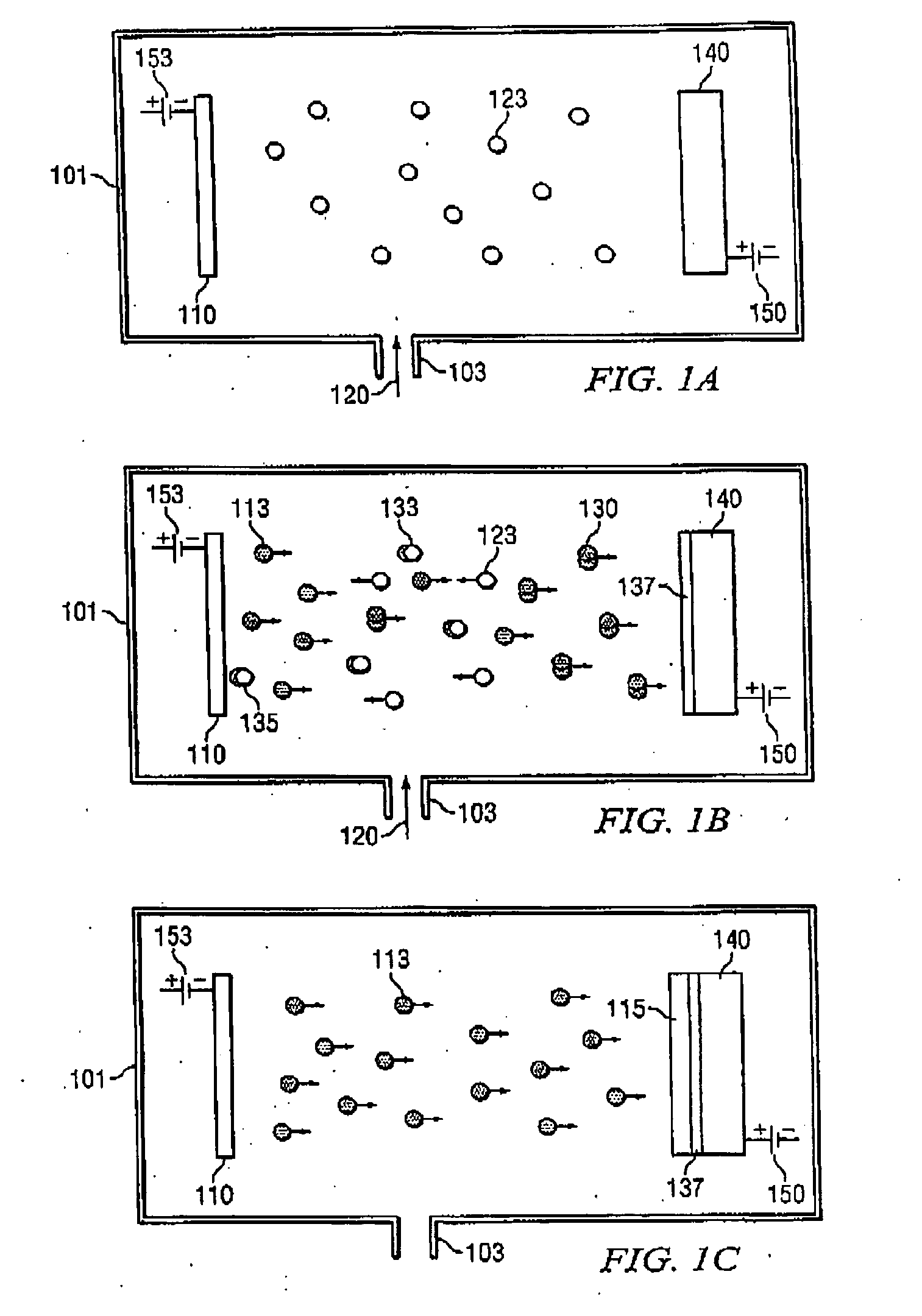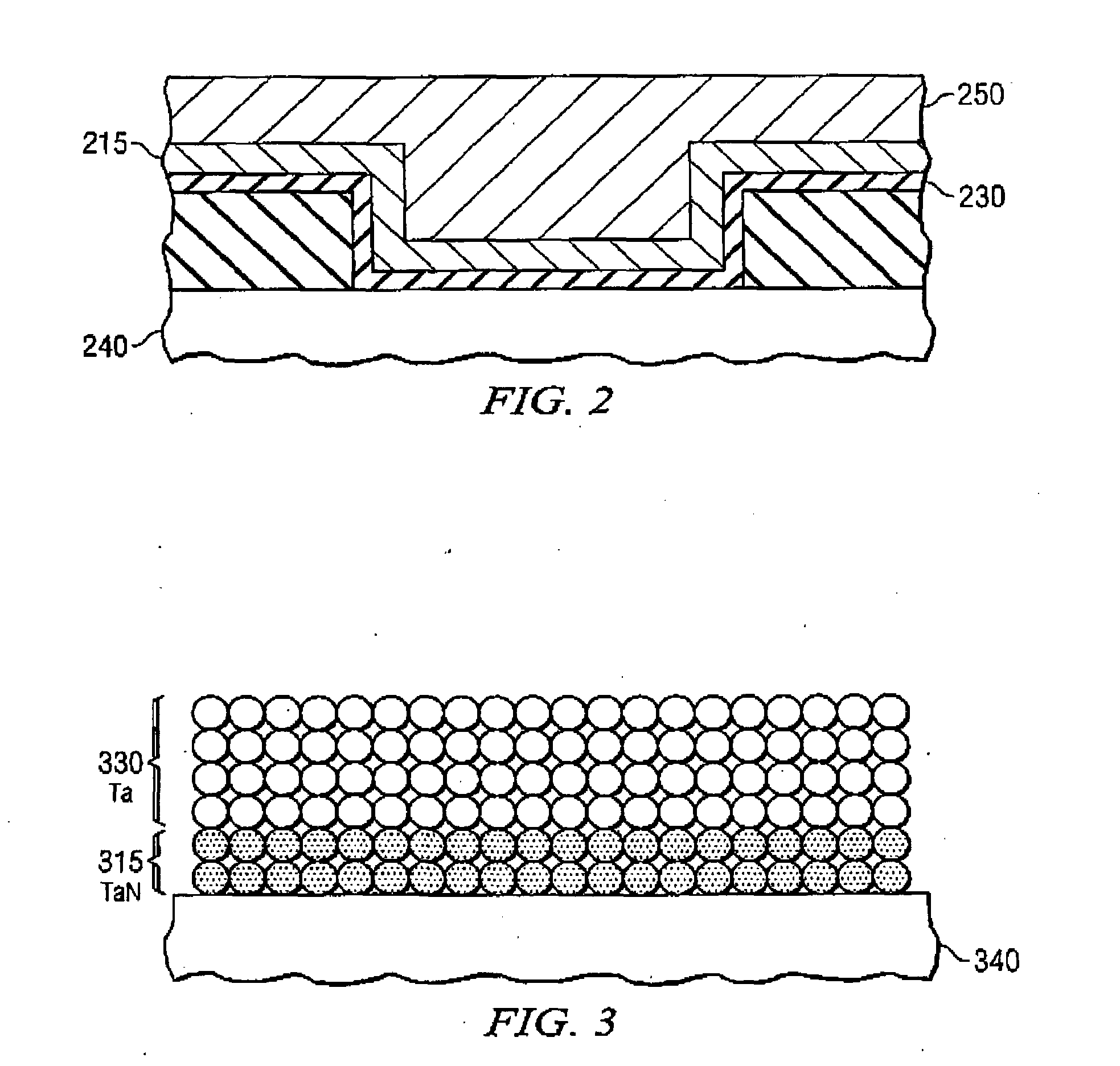Manufacturable reliable diffusion-barrier
- Summary
- Abstract
- Description
- Claims
- Application Information
AI Technical Summary
Benefits of technology
Problems solved by technology
Method used
Image
Examples
Embodiment Construction
[0016]The present invention discloses methods and devices to make a reliable diffusion barrier less than 1 nm thick that is produced using PVD sputtering. A wafer or a substrate is subjected to a deposition of metal nitride and a pure metal. A gas mixture comprising a reactive gas and a noble gas flows through the chamber at low pressure. An ignition phase starts the flow of plasma that disjoins metallic atoms from a target element. According to the present invention, the flow of reactive gas is stopped either before or during the ignition phase of the sputtering. Thus the flow of the reactive gas is completely stopped before the ignition phase of the sputtering is completed. This ensures that the nitride content of the deposited layer decreases as the layer is deposited on the surface of the substrate. Thus, a very thin layer of metal nitride is formed, wherein the nitride content reduces sharply as distance from the surface increases. Other benefits include improved process contro...
PUM
| Property | Measurement | Unit |
|---|---|---|
| Thickness | aaaaa | aaaaa |
| Thickness | aaaaa | aaaaa |
| Flow rate | aaaaa | aaaaa |
Abstract
Description
Claims
Application Information
 Login to View More
Login to View More - R&D Engineer
- R&D Manager
- IP Professional
- Industry Leading Data Capabilities
- Powerful AI technology
- Patent DNA Extraction
Browse by: Latest US Patents, China's latest patents, Technical Efficacy Thesaurus, Application Domain, Technology Topic, Popular Technical Reports.
© 2024 PatSnap. All rights reserved.Legal|Privacy policy|Modern Slavery Act Transparency Statement|Sitemap|About US| Contact US: help@patsnap.com










